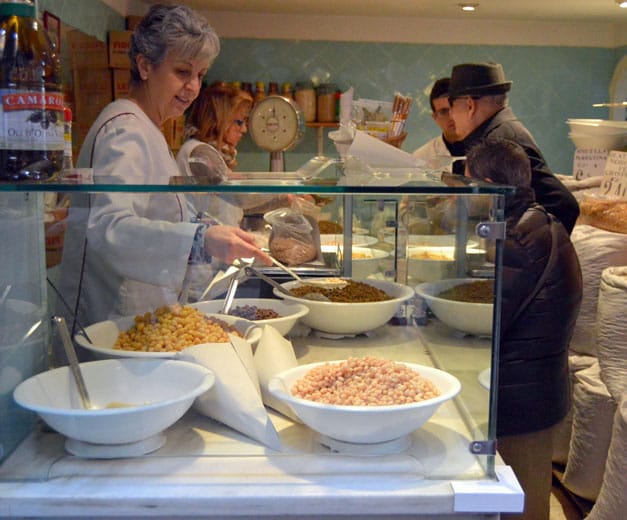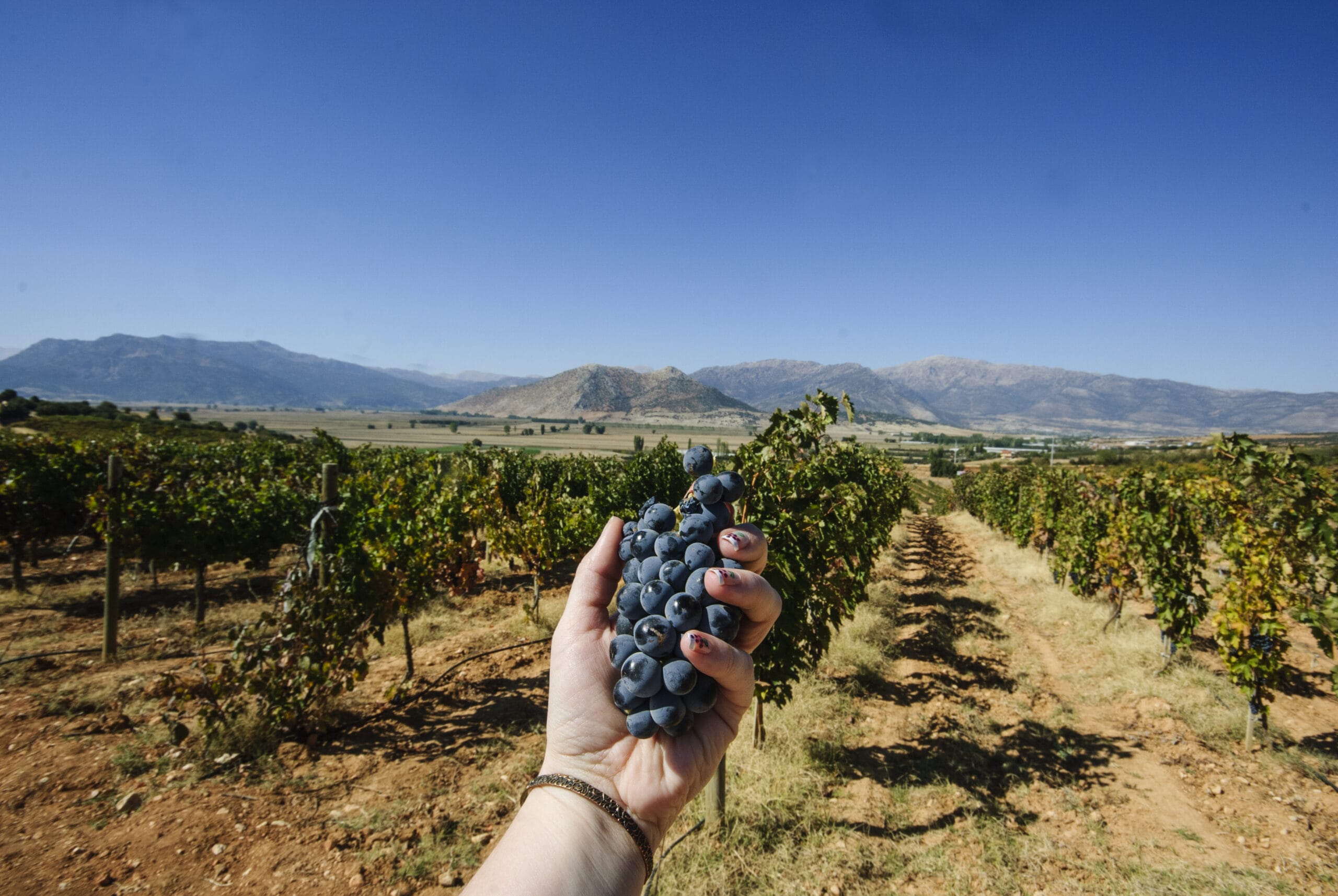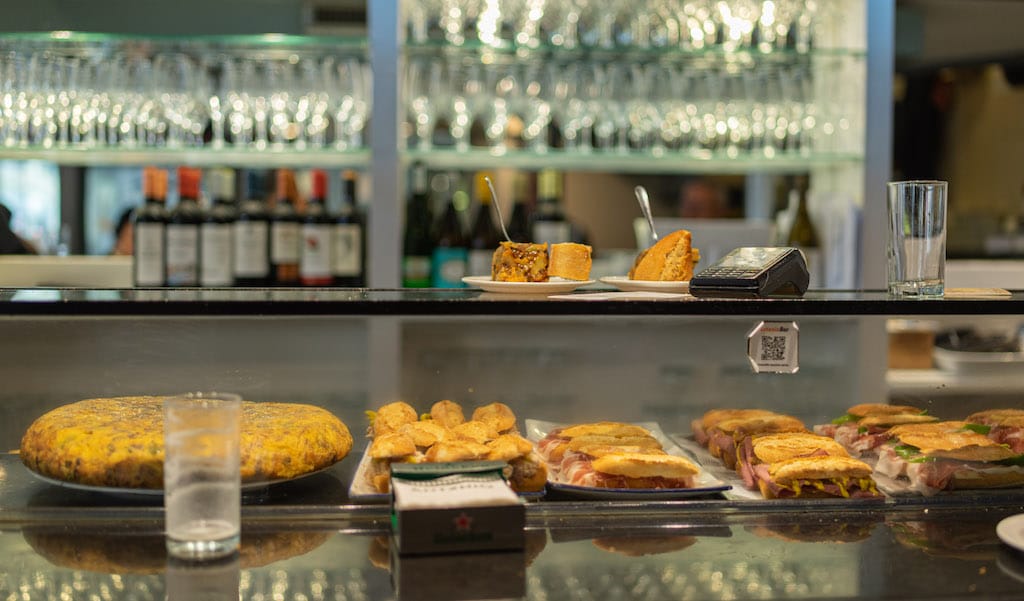On a warm August morning two years ago in an orchard somewhere west of Aomori City in Japan’s Tōhoku region (about 4 hours from Tokyo by train), we watched blackcurrant farmer Kenji Hayashi scoop dark magenta gelato into paper cups. Ribena had nothing on this. It tasted like summer incarnate, an electric blackcurrant explosion tempered with sugar and brightened with lemon juice. We ate greedily, trying to finish our gelato before the heat turned it into a puddle.
“So, how did you make the gelato?” We asked him.
“I met Ayumi-chan at a bar,” he replied.
He’s not alone. This is apparently how Ayumi Chiba of Gelato Natura meets all her fruit suppliers: drinking at bars. Natura stocks around 60 different flavors on a seasonal basis, most of it involving local produce. Sake, sweet potato, strawberries – if it’s made in Aomori prefecture, Chiba has probably made a gelato with it, and almost certainly met the supplier at a bar. Before the pandemic, she’d go for a drink and more often than not wind up making deals with melon growers, apple farmers and pumpkin purveyors over a bottle of dry sake.
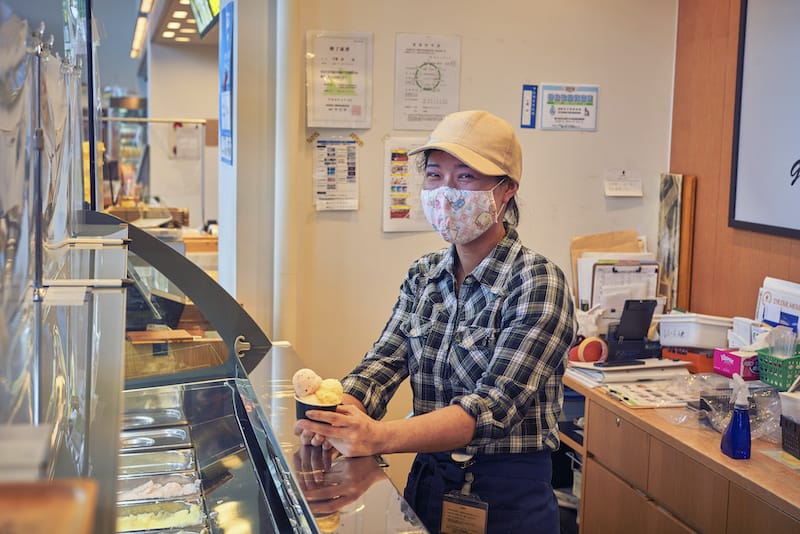
“There seems to be a lot of sake involved here,” we say to her.
“Well, yes.” She laughs. “I love drinking.”
It’s hard to say how old Chiba might be at a glance. She is also very funny. The first time we encountered Chiba in summer 2020, she was enthusiastically answering questions about her favorite drinks within five minutes of meeting. She made no secret of her love for a tipple or several, starting with a beer, moving on to a lemon sour, and then finishing with sake during a night out.
In Hayashi’s case, they’d met sometime in 2017 at a hashagu-kai, a kind of club event where you drink sake and mosh. (She mimed this for us.) The two were dancing, started chatting over drinks, he realized who she was and begged her to make gelato with his blackcurrants. He even followed up the next morning to ensure she’d remember him through the haze of a hangover.
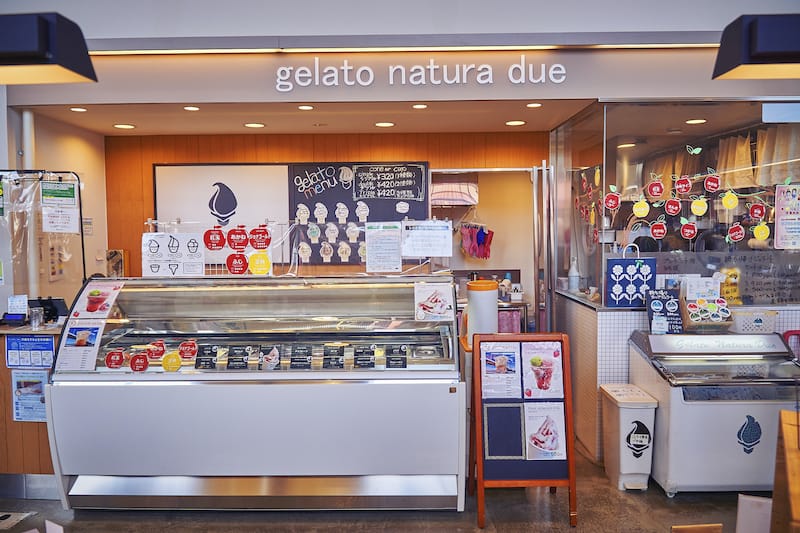
His eagerness to work with Chiba isn’t surprising. Aomori City has fewer than a dozen ice cream shops, one of which is Baskin Robbins, and two of which are branches of Gelato Natura. Chiba opened the first branch with her father 17 years ago, followed a few years later by Gelato Natura Due, a second branch in A-Factory, a shopping center by the main station. They’re something of a local institution – the most popular gelaterias in town by a long shot.
So, why gelato?
“Well, my dad went drinking…” begins Chiba. This seems to be a recurring theme. “And he borrowed an ice cream machine from a friend he met while drinking,” she explains.
Business was tough at first. Chiba and her father frequently butted heads, and she wasn’t receiving a salary. Around five years into the business, the 2011 Tōhoku earthquake and tsunami struck, which prompted many in Japan to rethink their entire lives, including Chiba. She left Aomori for five years, doing a year-long working holiday in New Zealand and building up her savings at office jobs in Tokyo and Osaka.
(Fun fact: New Zealand has the highest yearly per capita ice-cream consumption in the world — a mind-boggling 28.4 liters a year, last we checked.)

Returning to the family business was in many ways inevitable, but her time away had given Chiba fresh perspectives, new experiences, and crucially, administrative skills. Before leaving home, she hadn’t known how to use a computer. She used to make order sheets in Microsoft Word, manually adjusting table margins, calculating figures and keying them in. These days, it takes her 30 seconds in Excel. It’s miles ahead of how business is still done in some parts of Japan. Chiba notes that many customers still place their orders by phone or fax, and prefer paying by bank transfer rather than credit card.
On her return in 2016, Chiba decided that Gelato Natura’s selection — think matcha, banana, black sesame and vanilla — needed a facelift. Fortunately, she had the gregarious personality to connect with potential suppliers, plus more than a touch of gelato-making genius.
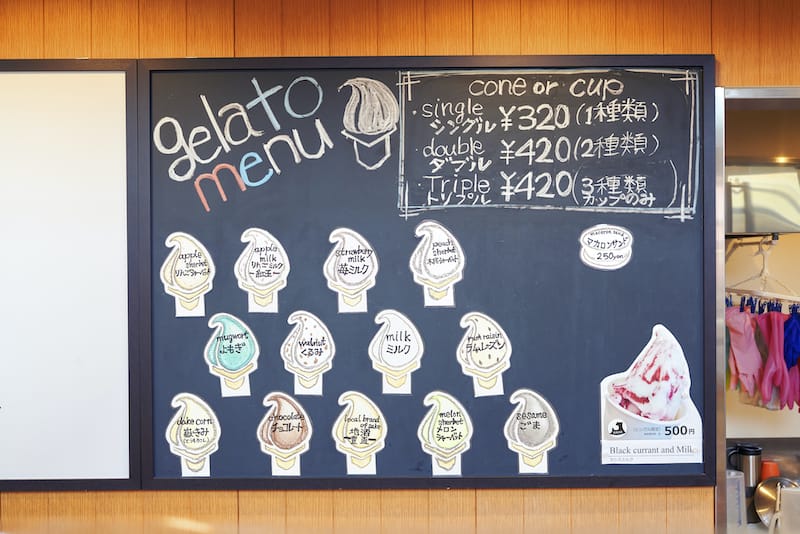
Today, Gelato Natura stocks 60 flavors, with close to 20 on sale at any given point, depending on the season. In between the more conventional flavors, you’ll often find unusual creations like pumpkin, Earl Grey, and tomato. Aomori prefecture is best known for its apples, so Chiba created a dozen different gelato flavors using different apple varieties. Sweet and mellow, with overtones of pear and pineapple, the pale yellow Orin apple gelato is one of their top sellers, thanks to a local pop idol with the same stage name.* We preferred the Akane, a pink sorbet with a refreshing acidity and lightness.
Besides the apple flavors, corn is another surprise bestseller – it’s simply kernels of fresh corn stirred into milk gelato. Their rum raisin is uncommonly vibrant: the secret is to let it sit around for six months and let the flavors deepen. Hayashi’s blackcurrant gelato is only available on his online shop – “We couldn’t sell it at the shop, it’s so expensive you’d cry,” says Chiba – but there’s usually a blackcurrant and milk version on sale. With tart scarlet-purple blackcurrant rippled through a beautifully creamy base, it’s as good to eat as it is to look at.
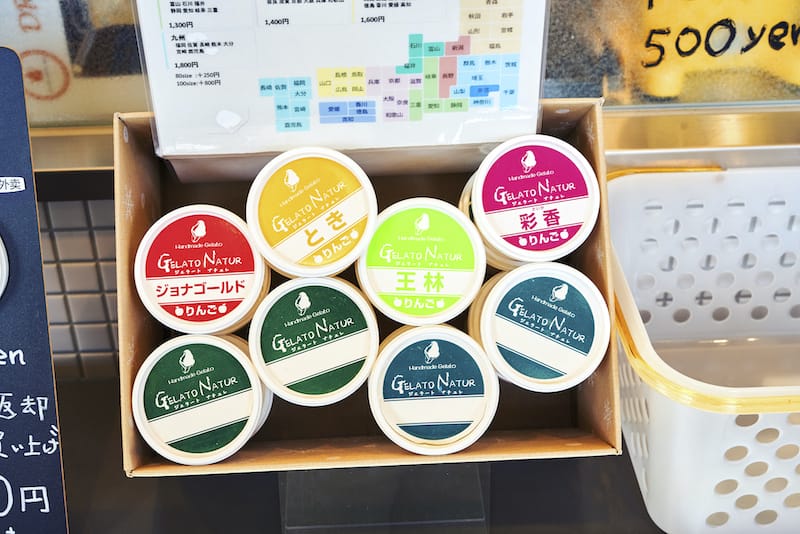
These days, Chiba’s goal is to reach a point where she can have a weekend of some kind. Summer holidays are off the cards, but she’d love a winter break at some point. Gelato is never far from her mind, though. Even on her occasional days off, she’s still tweaking and refining recipes; lately, she’s been experimenting with roasted Haruka sweet potatoes on a charcoal grill while simultaneously tending to chores.
Building relationships with farmers and sourcing produce also keeps Chiba busy. One of her blueberry suppliers shuttered during the pandemic, which meant she had to find someone new. Her tomato supplier retired, so she found someone else to replace him and introduce her to a sweet potato farmer to boot. But she hasn’t yet found a supplier of the one fruit she’s searched for since coming home: plums.
“There’s definitely someone in Aomori, but they might be in Nanbu [a region of southeast Aomori prefecture],” she muses. “I’d have to go drinking in Nanbu…”
*Every member of this Aomori-based idol group has a different variety of apple as their stage name. Apples are a recurring motif in their music, such as in a recent single, “Baked Apple.”
 February 2, 2023 Bean Week
February 2, 2023 Bean Week
Known in Catalan as mongetes – “little nuns,” as Catalonia’s oldest kind of beans […] Posted in Barcelona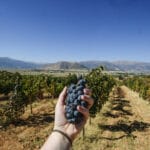 May 3, 2022 CB Book Club
May 3, 2022 CB Book Club
For this week’s CB Book Club installment, we caught up with Andrea Lemieux, author of […] Posted in Istanbul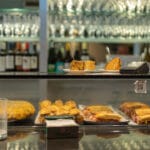 April 5, 2024 San Sebastian
April 5, 2024 San Sebastian
In San Sebastian, talking about food, but above all, about cooking, is the norm. Here, […] Posted in San Sebastián
Published on July 27, 2022
Related stories
February 2, 2023
BarcelonaKnown in Catalan as mongetes – “little nuns,” as Catalonia’s oldest kind of beans resemble the pale face of a nun in her black habit – or fesols, from the Latin phaseolus, beans are an integral part of the region’s culinary traditions. If Catalan home cooking could be represented by a single dish, it would…
May 3, 2022
Istanbul | By Culinary Backstreets
IstanbulFor this week’s CB Book Club installment, we caught up with Andrea Lemieux, author of The Essential Guide to Turkish Wine: An exploration of one of the oldest and most unexpected wine countries (Canoe Tree Press, 2021). In this exhaustive nearly 300-page guide, Lemieux, a WSET Level 2-certified wine expert and blogger behind The Quirky Cork,…
April 5, 2024
San Sebastián | By Sasha Correa
San SebastiánIn San Sebastian, talking about food, but above all, about cooking, is the norm. Here, something as small as a gilda is of the utmost importance. To stick anchovies, olives and guindilla peppers on a stick is not enough; together these ingredients must contrast and balance, living up to the gilda’s reputation as one of…
















































